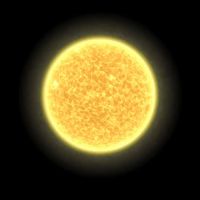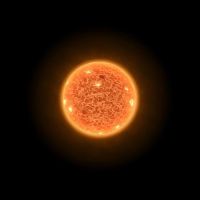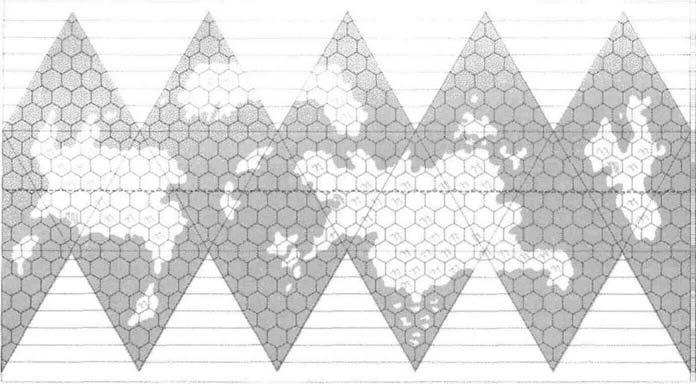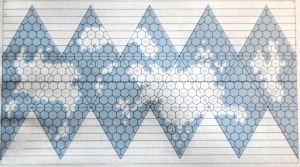Vanejen (world)
| |||||||||||||||||||||||||||||
| See also | UWP | ||||||||||||||||||||||||||||
style="width: 220px; height: 250px;"
Jump map from Travellermap.com [1] | |||||||||||||||||||||||||||||
| System Details | |||||||||||||||||||||||||||||
| Primary | G1 V M0 V | ||||||||||||||||||||||||||||
| Worlds | 11 | ||||||||||||||||||||||||||||
| Gas Giants | 0 | ||||||||||||||||||||||||||||
| Planetoid Belts | 2 | ||||||||||||||||||||||||||||
| Cultural Details | |||||||||||||||||||||||||||||
| Government | Feudal technocracy | ||||||||||||||||||||||||||||
| Law Level | Moderate | ||||||||||||||||||||||||||||
| Cultural Extension | 6833 | ||||||||||||||||||||||||||||
| Army Size (BEs) | 3000 | ||||||||||||||||||||||||||||
| Economic Details | |||||||||||||||||||||||||||||
| Technology Level | 5 | ||||||||||||||||||||||||||||
| Economic Extension | A77-2
| ||||||||||||||||||||||||||||
| Importance Extension | 0 | ||||||||||||||||||||||||||||
| Resource Units | 392 | ||||||||||||||||||||||||||||
| GWP (BCr) | 716 | ||||||||||||||||||||||||||||
| World Trade Number | 4.5 | ||||||||||||||||||||||||||||
| Trade Volume (MCr/year) | 4,232 | ||||||||||||||||||||||||||||
| Starport Details | |||||||||||||||||||||||||||||
| Classification | Class-C | ||||||||||||||||||||||||||||
| Port Size | 4 | ||||||||||||||||||||||||||||
| Building Capacity (Tons) | 475,000 | ||||||||||||||||||||||||||||
| Port employees | 1,220 | ||||||||||||||||||||||||||||
| Port passengers (annual) | 361,300 | ||||||||||||||||||||||||||||
Vanejen is a garden world with an environment conducive to most sophonts. The system has a population between 100 million and a billion sophonts. This world has the Imperial Research Station Gamma for the Sector. It is a member of Third Imperium in the Rhylanor Subsector of Spinward Marches Sector and in the Domain of Deneb. Vanejen, as a member world of the Third Imperium, holds the estates of an Imperial knight and a baronet, and the fiefdoms of a baron and a viscount. All four are members of the Imperial Nobility charged with overseeing the world. 10% of the world's population is the Minor Race Chirper.
Astrography and planetology
Vanejen is a member of the Spinward Main.
The primary, the G1 star Vitus, holds all the planetary bodies in the system. The companion sun, Gikuk, a dim M8 star, currently about 160AU from Vitus, has a family of two anemic asteroid belts, neither of commercial value.
Binary Solar System
System Data
The system consists of a bright central star, a total of seven planets (including Vanejen} and five satellites. Only Vanejen is in the system's life zone, and none of the other worlds show any sign of life or of value. In addition, the Vanejen system has no gas giant— surprisingly, an asset which first drew Imperial attention to the system. The oceans of Vanejen can provide water for starship fuel to forces occupying the world, but attacking starforces are at a distinct disadvantage, needing to conquer the world itself before gaining access to the water they require for volume refuelling.
Vanejen has two of the five satellites in the system, both of them small chunks of rock. Both were used as orbital bases by the Imperial Navy when Vanejen was fortified in 980; they have since been stripped of any armaments, but may retain some equipment not considered important enough to remove. [2]
A total of seven planets and two asteroid belts orbit the two suns. There are no gas giants in this system. The mainworld, Vanejen, the third world out from Vitus, has two tiny moons, Gajkura and Gajsarir.
Mainworld Data
Diameter 8,900km (5,530 miles), with a density of 5.7g/c3 (1.04 standard), makes Vanejen a somewhat small world. This has proven advantageous to the natives for a number of reasons. In the past, primitive empires were able to achieve global status thanks to the reduced travel and communications times, so large scale violence and war were effectively supressed. The small size and average density means that gravity is only 0.75G standard.
Mainworld Geography & Topography
A standard geodesic map of Vanejen using 800 kilometer hexes is shown on Vanejen maps. The equator divides the world into north and south hemispheres, and passes through three of Vanejen's four continents. The northern fourth continent is relatively barren, without any mineral wealth or large human settlement, although there is a chirper population. The three other continents each have urbanized and settled areas as indicated by the city symbols; urbanization and extensive development can be encountered on each continent within four hexes of those symbols. Mountain symbols indicate mountainous, rough or broken terrain; clear areas may be clear, prairie, forest, jungle, desert, swamp, marsh, or river. Arctic terrain can be expected in the top and bottom four hex rows of the map. [2]
Vanejen itself is a cool world with a dense atmosphere, four mountainous continents and very deep oceans. Of the four continents, humans have permanent settlements on the three in the equatorial region. The fourth, located in the northern hemisphere and considered barren, is set aside by the world government as a reserve for the indigenous, non-human population, referred to locally as Chirpers.
Mainworld Map
Vanejen is a medium-sized world with a dense atmosphere. Having a diameter of 8900 kilometers and a circumference of 28000 kilometers, the world has an atmosphere with a more or less standard gas mixture and no noxious elements.
Seas of water cover 62% of the world's surface. These seas are quite deep, especially away from land masses. Polar icecaps are present in both hemispheres, but the lack of continental anchors or boundary land masses makes them fragile and prone to dispersion into icebergs due to weather. [2]
Atmosphere
With an air pressure of 1.3 standard at sea level, the atmosphere of Vanejen is classified as dense. The very mass of the atmosphere means that storms, a common occurrence in the temperate regions, can be extremely violent; exercise due caution. A fairly standard oxygen/nitrogen mix, the extensive volcanic activity on this planet can raise levels of carbon dioxide, carbon monoxide and various sulfur compounds to the irritant stage in localized areas (closed valleys, for example), compounded during the summer season. The heavy use of fossil fuel technology exacerbates the problem in the major population centers, photochemical smog a common occurrence. Overall conditions, however, remain in the standard tolerance spectrum.
Hydrographic
62%. The icecaps of Vanejen vary seasonally, but average about 15 degrees longitude from either pole. Without extensive landforms to anchor them, these icesheets have a tendency to breakup, especially during the stormy local spring and autumn. This breakup and subsequent melting of the icebergs means that the salinity levels of the Vanejenese oceans, at least the surface layers, are comparatively low. The high winds discussed earlier, however, drive powerful ocean currents, pushing the lower saline waters aside in the areas around the 30 degree latitude region, allowing the dense, highly saline deep waters to come to the surface. This also drives a rich plankton biome in those regions, with a resultant vast array of marine life. The variable salinity, and rather colder temperatures, means that terramorphic life has a hard time adjusting to local pelagic conditions. So far only the Terran penguin has been able to naturalize itself - a Dolphin colonial group went bankrupt in 1095, without placing a single resident on the world.
Native Lifeforms
Flora and Fauna: The animal and plant life of Vanejen is unremarkable (with the exception of the semi-intelligent chirpers) and corresponds to standard animal types. [2]
While it is likely Vanejen has evolved its own life forms, so many imported species have become naturalized that indigenous life is difficult to identify. IISS investigators can only tentatively designate those species they believe to be native, being able to positively classify only obvious imports, such as those brought since Imperial contact.
Introduced Lifeforms
Vanejen is the homeworld of the Vanejenese, a minor human race.
History and background
Vanejen (0709-C686854-5) is located in the Rhylanor subsector of the Spinward Marches. Vanejen is a rich world approximately 9,600 kilometers diameter, with a dense breathable atmosphere and seas covering 60% of the world's surface. Icecaps constitute about a third of this percentage (20% of the total world surface). Population is currently 543 million, distributed over three of the four continents, with scattered settlements on the barren fourth continent.
Vanejen lies in a cluster of worlds in a backwater of the Rhylanor subsector; a backwater that sprang to sudden prominence in the course of the Third Frontier War (976 to 986) as the Imperium struggled to resist its continuing adversary, the Outworld Coalition. The Navy found it necessary to establish a base at Vanejen, and, in the process, made the local inhabitants aware of their starfaring neighbors. The world was catapulted into the reaches of interstellar society in the course of only a few years. [3]
World Starport
Vanejen has a Class C Starport, an average quality installation which includes amenities including unrefined fuel for starships, some brokerage services for passengers and cargo, and a variety of ship provisions. There is a shipyard capable of doing maintenance and other kinds of repair. Ports of this classification generally have only a downport, unless this is a trade port or system with an hostile environment mainworld.
Vanejen itself boasts a class C starport, a lower quality installation which once served as an Imperial naval base. But no longer: the navy pulled out of the base in 995, and the installation was retained as the world's starport. In a few years, as Vanejen gets up to tech level 8 or 9, the starport will probably be upgraded to B. Currently, the starport provides unrefined fuel, and does not have either ship building or repair facilities. It is located at the urban center on the large central continent. [2]
The starport at Vanejen is a class III facility, only recently beginning to offer refined fuel and basic ship repair. Built on the old Navy fortifications, the downport is located near the heart of the Vanejenese capital city of Jeelik. The highport is located on Vanejen's outer moon, Gajsarir, also built on abandoned Navy works. While interstellar traffic has grown dramatically, especially during the last 30 years, growth of the starport facilities has been haphazard. Several economic depressions and a series of scandals have shut down expansion of the port several times. A recent infusion of investments from a consortium of Denebian firms has allowed construction efforts to restart, with a new 20,000 dton berth scheduled to be opened in the near future. It is rumored that the starport will be upgraded to Class IV within a decade.
World Technology Level
Vanejen possesses a Technology Level of TL–5.
- Common Communication technologies for this TL include: Telephone, radio, and television.
- Common Power Generation technologies for this TL include: Electricity, hydrocarbon internal combustion, and the most fundamental atomic energy.
- Common Transportation technologies for this TL include:
- Land: Ground cars or automobiles and tracked vehicles.
- Water: Large ships and submersibles with steel hulls.
- Air: Early aircraft including seaplanes and very early unmanned rockets.
The current technological level of Vanejen is 5, equivalent to the Terran period 1900 to 1939 CE. Electronics are rudimentary and gravitics nonexistent. The primary emphasis of manufacturing is mechanical. [2]
The Vanejenese have jumped from an overall TL–2 to TL–5 in little over a century, in a carefully orchestrated campaign by the Great Families. The major cities can be considered TL–6, although at the very early stages and with significant imports of offworld technology. While much of this increase came from offworld investments and outright purchases by the Vanejenese government, a significant portion is home made. The Vanejenese have shown themselves to be quite capable at adapting local, low-tech industries to high tech concepts. While electricity is still a rarity outside of the major cities, computer technology based on fossil fuel driven steel clockwork has become widespread, among other adaptations. There is also a huge, blackmarket, demand for offworld batteries; to drive the bewildering variety of locally produced machines and vehicles.
World Government
Vanejen is governed by a Feudal Technocracy. Society divides itself based on the technical requirements of the society. Each of these functions are granted as a fief to an individual or group. Leadership of these fiefs determines the head of the government.
Government is a planet-wide feudal technocracy imposing a rather liberal law level of 4. [2]
The Membership of Great Families, officially an ad hoc group of powerful industrial clans and their associates, controls most of Vanejen directly or through proxy organizations. IISS experts have classified the Membership as a feudal technocracy, as each Great Family dominates a specific sector of the economy under a set of obligations and strictures modeled on an earlier feudal/military government.
World Law Level
The Great Families are not particularly concerned with the actions of individuals, or with most areas of taxation or welfare, providing most such services as part of their own internal structure. Overall Control Rating is classified as 2 in regards to offworlders, who enjoy some greater freedoms than the various caste and clan based native cultures.
World Economy
Margrave Shipyards is a local Maritime Shipyard[4]
World Demographics
Human population on Vanejen is 543 million (a computer estimate) as of 1105. [2]
Racial extraction is primarily Vilani, a result of colonization some 3,500 years ago; only limited intermingling (primarily from naval personnel during the Third Frontier War) with Solomani and other human races has occurred. [2]
An official census has not been conducted, but IISS estimates placed the Human population at about 600,000,000 in 1115. Increases in medical technology have boosted local lifespans, already long thanks the high percentage of Vilani ancestry, while infant mortality rates are improving at an even faster rate.
The average age of a native of Vanejen is 10 standard years while the estimated lifespan of a newborn Vanejenese is over 100 years and climbing.
Most of the Human population are genetically pure Vilani, reflecting the origin of the colonists and the limited contact Imperials have had with the majority of the Vanejenese. Imperial settlement has been largely restricted to Jeelik and the regions immediately adjacent, including the Nal Basin and the Northern Planes. Of these, most are of Solomani origin, with a smattering of other Human races. Nearly all Imperials outside of Jeelik are retired Imperial Navy personal, their families and descendants. There are no significant populations of non-Humans, aside from the indigenous Chirpers.
An unknown number of Chirpers, small bird-like bipeds of limited intelligence, are native to Vanejen. Once widespread, their numbers have dropped dramatically according to IISS estimates, even with active Imperial and local government intervention. Chirpers are still found on all continents, although there has been a push to transport them to specified reserve areas. This has met with limited success and increasing criticism.
Urbanization
In addition to Vanejen Startown, other major settlements on Vanejen include:
- Ganemir City
- Gumlin
- Ligalik Town
Historical Data
HISTORICAL BACKGROUND During the Third Frontier War (979 to 986), the major efforts of the Outworld Coalition were directed at Efate, Boughene, and Pixie, all in the Regina subsector. This strategy was essentially the same as had been used in the previous wars. But in addition, the Coalition launched a subordinate drive through the Vilis and Lanth subsectors, across the Abyss, and gaining a foothold at Jae Tellona. From there, both Rhylanor and Porozlo were put under siege. This salient diverted large portions of the Imperial fleet from their main engagement in the Regina subsector, and brought the war to a stalemate that lasted some eleven months. Neither side could make any real advances, but the entire rear of the Imperial defense was threatened. The insertion of substantial reinforcements from the neighboring Sabine subsector eventually broke the deadlock, and forced the Zhodani hordes back.
Vanejen figured prominently in this campaign of the Third Frontier War. Originally settled in the third colonization wave of the Vilani Empire, circa 1230 VI, Vanejen regressed (along with most of the human worlds) to barbarism during the Long Night, and remained at low tech levels until recontacted in 980. Strategically, the Navy needed a rear area starbase from which to support the expulsion of the Outworlders; Vanejen looked to be most suitable. The local inhabitants became aware of their starfaring neighbors.
Ordinarily, this would be the cause of great civil upheaval, but the Navy was exceptionally prudent. Preliminary contacts were made; the ruling families were convinced that they could chart a well-planned course into their own future. The government of Vanejen was (and is) basically feudal, and (while static), was a comfortable sinecure for those in power. These ruling families each held their own territories, and competition had become essentially stylized, channelled into trade and commerce. The rulers could see the obvious appeals of progress, so long as their own power was not challenged.
In return for services to the Navy, the government received orbital surveys, computer simulations (complete with advisers to translate them), and basic technological assistance to get their programs moving. And then, the people in power translated their regional authority into monopolies in commerce and technology.
The Margrave family, for example, assumed the monopoly on steel and construction metals, while the Flandren family took land transportation. Other families took other basic areas (such as communications, chemicals, or banking; sea transport was ultimately divided among several families), while long-range planning left open new areas (such as electronics, and gravities) to be issued to worthy or powerful groups which might arise in the course of time.
In the century since the naval base was established (and long since closed down), Vanejen has progressed slowly and deliberately from tech level 2 to tech level 5, while the original ruling families have retained their power in the planet-wide government.
Sea transport is commonplace on Vanejen, especially in the northern hemisphere. The ice-packed and storm swept southern seas of Vanejen were for many years virtually impassible to surface transport, often necessitating a longer northern route, a time-consuming and inefficient requirement in many cases. Within the past few decades, submersibles intended for commercial use in the storm and ice of the south have been developed. [5]
When the Imperial Scout cruiser Vitus Bering entered this system in the year 53, they discovered a classic lost colony; a culture so regressed from its First Imperium origins they barely retained iron working skills. The Scouts requested an Interdiction, sealing the world from contact pending an Imperial decision on how to proceed.
As a local nobility was not in place for hundreds of years, the interdiction remained unchallenged, although it was haphazardly enforced prior to the beginning of the third century. Not until the Third Frontier War was the interdiction actually reviewed. In 980 the Imperial Navy received permission to contact the natives, and establish a base. In 995, only a few years after the end of hostilities, the Imperial Navy (IN) facility was closed.
However, by that time the Vanejenese had entered the economy of the Imperium and the starport was converted to civilian use. While that ended official military interest in this system, both the Navy and the Scouts retain rights for future bases. An Imperial Research Station, Gamma, was established in 1075. While the Station itself is well known, the type of research conducted is highly classified. It is thought that the Imperial Navy IN funds this Station.
References & Contributors (Sources)
- Marc Miller. Research Station Gamma (Game Designers Workshop, 1980), 1-8.
- Marc Miller. The Spinward Marches (Game Designers Workshop, 1979), 30-31.
- Marc Miller. The Spinward Marches Campaign (Game Designers Workshop, 1985), 18-19.
- Marc Miller. Imperial Encyclopedia (Game Designers Workshop, 1987), 94-100. (UWP only)
- Rob Caswell. "Domain of Deneb: Sector Data." MegaTraveller Journal 3 (1992): 47-58. (UWP only)
- Dave Nilsen. The Regency Sourcebook (Game Designers Workshop, 1995), 43. (UWP only)
- Martin Rait. "Spinward Marches Pre-Imperial History." Meshan Saga 07 (1988): 12-13.
- Martin Dougherty, Neil Frier. Behind the Claw (Steve Jackson Games, 1998), 110.
- Mike West. The Spinward States (Avenger Enterprises, 2008), 104. (UWP only)
- Martin Dougherty. The Spinward Marches (Mongoose Publishing, 2008), .
- Citation Missing - Behind the Claw
- Joe Webb - Vanejen Public Datadead link
- ↑ "Jump Map API" and map location from Travellermap.com
- ↑ 2.0 2.1 2.2 2.3 2.4 2.5 2.6 2.7 2.8 Marc Miller. Research Station Gamma (Game Designers Workshop, 1980), 6.
- ↑ Marc Miller. Research Station Gamma (Game Designers Workshop, 1980), 1.
- ↑ Marc Miller. Research Station Gamma (Game Designers Workshop, 1980), 10.
- ↑ Marc Miller. Research Station Gamma (Game Designers Workshop, 1980), 7-8.
- Worlds with a research station
- Third Imperium worlds
- Domain of Deneb worlds
- Chirper worlds
- Worlds
- Era: Milieu 1116
- Spinward Main worlds
- Binary Star System
- Articles at intermediate completion state
- Citation Missing
- GT
- Highport worlds
- Orbital Facility
- Imperial Psionics worlds
- Psionics Institute worlds
- Psionics worlds
- Sabinar Federation worlds
- Vanejenese worlds
- Beaked Monkey worlds
- T5 Second Survey worlds
- Library
- Canon
- V



